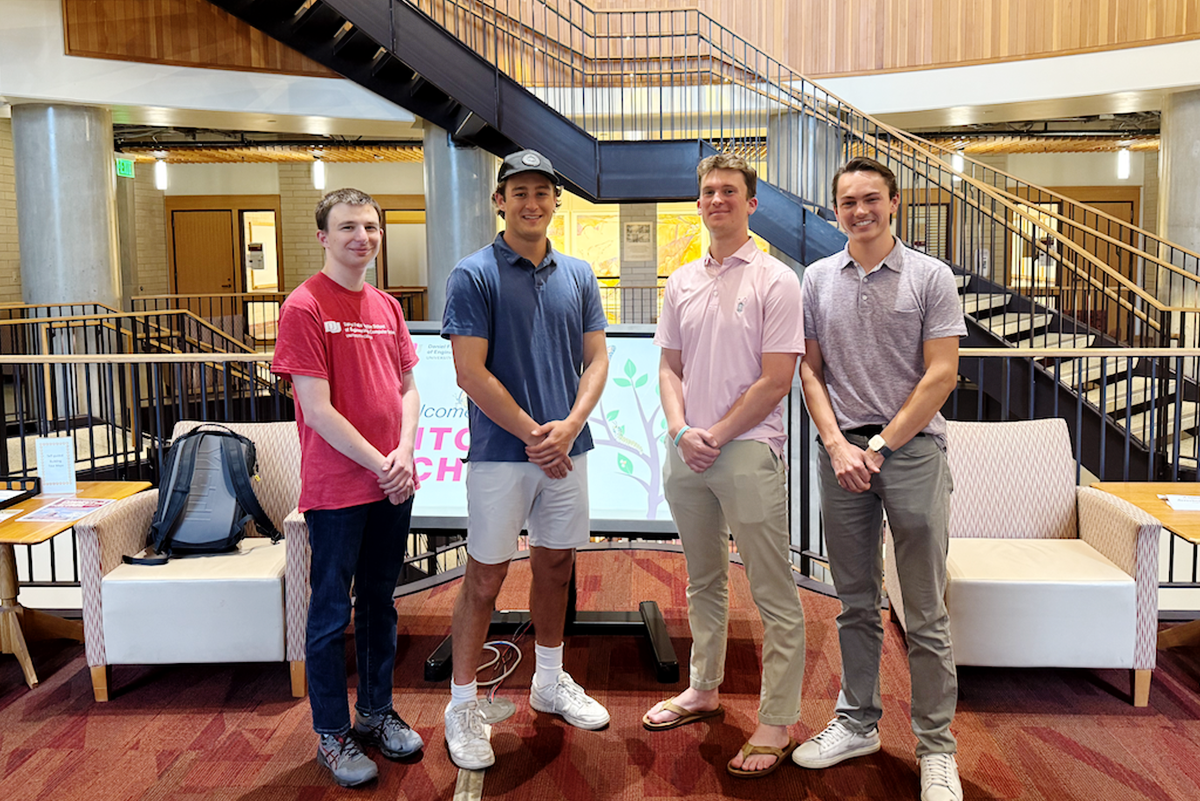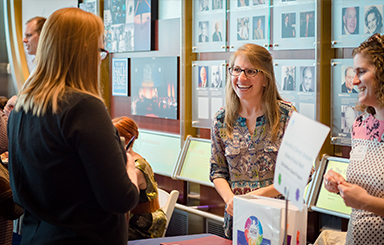Meet the 2025 Senior Design Teams
Senior Design is a year-long engineering course that provides graduating seniors with a dynamic opportunity to innovate, learn, and collaborate. Seniors work in interdisciplinary teams of 3-6 students and are mentored by experienced engineering faculty and project sponsors throughout the process. This hands-on experience offers students firsthand exposure to working with potential future employers while completing real-world projects. Aside from the technical skills, this course also helps students develop and refine their collaborative teamwork abilities while delivering impactful project results for their sponsors.
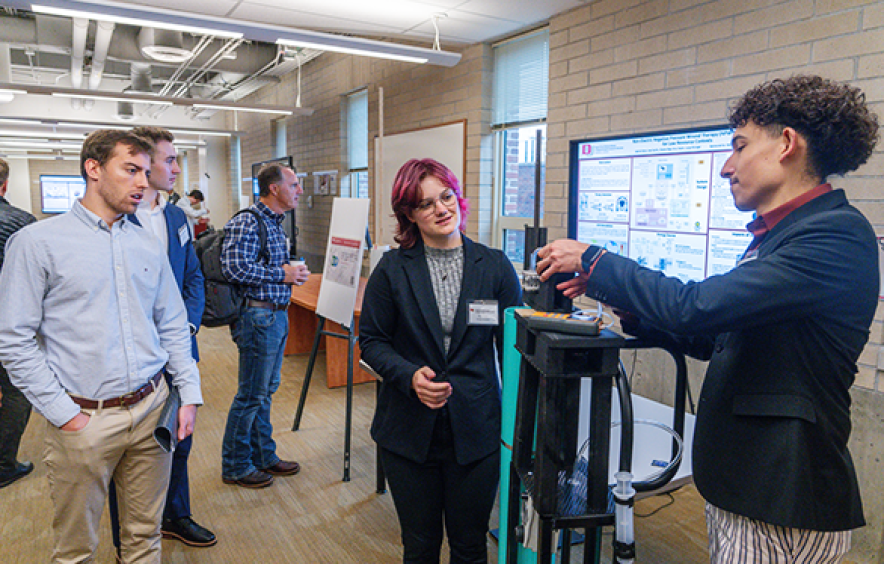
Schedule
Senior Design Pitches and Q+A
9 AM - 10:30 AM
ECS 510Senior Design Poster Demonstration
10:30 AM - 12:30 PM
ECS First Floor
Meet the Teams
-
Parallel Portable Bars
Sponsor: Agile Orthopedics
Team Members: Christian Powell, Megan Bridgeman, Will Melsha, Dalal AlFraih
Agile Orthopedics provides and adjusts custom-made leg prosthetics for patients of all sizes. In addition to prosthetics, Agile Ortho has the ability to transport rehabilitation equipment to a patient’s home, removing the need for the patient to make the commute to a hospital or physical therapy clinic. To aid in the mobile rehabilitation efforts of Agile Ortho, Team Agile has developed portable parallel bars: sturdy enough to withstand heavy loads, compact enough to disassemble and fit in the trunk of a sedan, and unique enough by providing valuable biomechanical data from the patient to the practitioner.
The final prototype design uses aluminum support arms that can telescope and lock using pins, allowing for adjustable height. The base, being a combination of 3D-printed plastic and aluminum, utilizes U-brackets that enable the connection point of the base and support arms to slide and lock in set positions for adjustable width. The base locks the support arms down using the same pins for the telescoping support arms. Wooden handrails with stainless steel hinges can fold from 6-foot segments to 3-foot segments. The biomechanical pressure sensors are attached to the foot of the patient and relay data via Bluetooth to a website that records and stores the data. All components weigh under 50 lbs together and fit into a roller bag for easy transportation and storage.
These parallel bars have the unique quality of being easily transportable and readily usable. Additionally, the sensors located at the patient’s feet can provide valuable data to the practitioner, indicating specific areas where the patient can learn to improve their gait. Team Agile’s portable parallel bars can provide meaningful patient care in the comfort of their homes, reducing the need for a patient to drive who may have difficulty moving.
-
Real Time Vein Viewing and Needle Tracking
Sponsor: B-Braun Medical
Team Members: Riley Alcala, Emma Clason, Blaine Cullen, Gunner Johnson, Addis Mulugeta, Jacob Weiner
Sponsored by B-Braun, a manufacturer of cutting-edge biomedical technology, we at MTE Associates are tasked with the development of a catheter insertion device that nurse practitioners can use to easily identify patient veins and track needle point positions to aid in PIVC insertions in real-time. Our device must by extent respect all hospital protocols for use, including maintaining sterile fields, mobility, and durability across as many clinical settings as possible.
Our final design employs the use of near IR technology and machine learning to identify and separate veins from surrounding tissue, as well as identify catheters of varying gauges and lengths to project the location of the needle tip in 3-Dimensional space. This is achieved through the use of 2 cameras running independent streams of vein viewing and needle tracking that are then merged into one feed for users to view on a screen. As such, the user will be able to see a real-time feed of a patient’s skin with color differentiation to identify veins from surrounding tissue, as well as an on-screen dot highlighting the position of the catheter needle point during the entirety of the PIVC insertion process.
The success of this prototype will provide B-Braun with a blueprint of a device that can be used to ensure higher rates of first stick success in patients with deep-seated veins and patients of a wide variety of skin tones and skin types. The increased first-stick success rate provided by this prototype will aid in reducing the risk of patient infection, increase workflow efficiency, and ultimately increase patient comfort during these routine procedures. Most importantly, B-Braun's adoption of our prototype can provide a safer and more accurate alternative to other PIVC insertion methods.
-
VIP for BIT
Sponsor: Blind Institute of Technology
Team Members: Campbell Knudson, Kareem Badr, Ryan Hernadez, Yannis Cassis
We are designing a way to help professionals with vision loss by supporting people with education and creating opportunities to close the gap of inclusive education within the STEM field. Our goal is to find sympathy and inclusion within the visually impaired community to create accessibility for them within their education to build strong foundations in physics. We aimed to provide a way to implement topics of physics at a high school level through technology for visually impaired people to understand these concepts using learning strategies including tactile, interactive, and auditory learning.
Our system provides an integrative system to connect tactile modules that are user-friendly and interactive comments of learning to auditory learning from an IOS application. These integrated tactile and auditory modules are five different physical items covering the topics of gravity, energy, electricalities, nuclear physics, and electromagnetic radiation. The IOD application scans the modules and explains the theory behind the physical aspect of these concepts of physics with equations and learning modulus. The tactile items give the user the ability to visualize what these broad and unseen theories behind physics are whether it is an example to feel for an example of these equations in use with the tactile comments.
Given the completion of this product, we aim for accessibility in the education system to provide a better inclusive environment for schools to cater to a new way of learning without visual sight. This technology can be used by visually impaired or seeing students in order to better understand physics and create an environment where visually impaired individuals are adapted into opportunities for STEM-relegated careers.
-
Stowable Transfer Board
Sponsor: Craig Hospital; Patrick Wagner
Team Members: Faith Alexopoulos, Ellen Corr, Ryan Cunningham, William O’Shea
This project aims to create a transfer board for wheelchair users that can be conveniently stowed and accessed directly from their wheelchair. The need addressed here is the lack of portable and user-friendly transfer solutions that allow individuals to move independently from their wheelchairs to another surface. Current boards are often bulky, difficult to carry and require assistance, which limits user autonomy. This design focuses on enhancing independence and accessibility for people who rely on wheelchairs in their daily routines.
The final design is a foldable transfer board made from Baltic birch plywood, a material chosen for its balance of strength, stability, and relatively low weight. The board measures approximately 30 inches long and includes handles on both sides for better control during transfers. The tapered ends help users position the board smoothly between their wheelchairs and the target surface. The board folds in two places, allowing it to collapse into a compact form measuring roughly 11.5 inches by 8 inches by 2.875 inches, making it practical to store under the wheelchair seat.
Aluminum inserts are embedded at each hinged section to ensure the board is level when unfolded and to add more strength to these high-stress areas. The hinges are fastened with M5 machine screws into wood inserts that are highly compatible with Baltic birch, creating a durable and long-lasting joint. A fabric covering is added to protect the user from pinch points over the hinged areas and to improve comfort during transfers. When folded, the board fits into a soft carrying pouch mounted underneath the wheelchair seat. The pouch opens toward the front of the chair for easy access and is held in place with fabric ties for stability and quick removal when needed.
The impact of this project is to increase the independence of wheelchair users by allowing them to carry and use their transfer boards without needing assistance. This feature reduces dependence on caregivers and expands the range of accessible environments for users. It also supports caregivers by reducing the need for hands-on assistance during transfers, while helping users maintain a greater sense of independence and control in their daily routines. The design is simple, functional, and suited for a range of user abilities. Its cost-effective materials and construction methods also make it a promising candidate for broader distribution or open-source adaptation within the disability support community.
-
Happi Hat: Thinking Cap 2.0
Sponsor: Daqscribe
Team Members: Alana Ginter, Dylan Wright, Emily Lin, Michael Logan, Will Brandine
Objective: This project aims to overcome the limitations of current EEG systems by improving user comfort, adaptability, and accessibility for home-based, long-term use. Traditional EEG setups often require rigid headgear and professional administration, making them impractical for continuous or self-directed monitoring. Our objective is to design a user-friendly system capable of real-time data acquisition while accommodating a wide range of head shapes, hair types, and usage environments.
Solution: To meet these goals, the team developed a modular EEG headgear system using bungee cords, a track-based adjustment mechanism, and flexible sensor mounts. These components ensure a customizable and secure fit across various users without sacrificing signal quality. The device supports data collection at 125 Hz and 250 Hz, powered by a long-lasting battery capable of 20 hours of operation. Key hardware elements include a Raspberry Pi for onboard processing, the OpenBCI Cyton board and Daisy module for neural signal acquisition, and custom sensor mounts aligned with the standardized 10–20 electrode placement system. The adjustable headband and track design ensure consistent electrode placement while maximizing user comfort and setup efficiency.
Impact: This system significantly increases the portability and usability of EEG technology, enabling at-home, real-time brain monitoring without the need for professional oversight. By reducing setup complexity and improving user comfort, our design opens the door for more frequent and accessible EEG data collection. The potential applications range from clinical neurofeedback and sleep studies to brain-computer interfaces and mental health monitoring. As more continuous EEG data becomes available from diverse populations and settings, this innovation may contribute to breakthroughs in neuroscience and deepen our understanding of brain function in real-world contexts.
-
Teaching Apparatus for 3D Particle Equilibrium (T.A.P.E)
Funded by KEEN Annual Grant Award
Team Members: Yahir Luevano Estrada, Kian Roseborough, Dylan Townsend, Nancy Zelaya
Statics is a foundational engineering course that requires students to visualize force systems to set up equations of equilibrium and solve for unknowns. While planar (2D) force systems are straightforward to visualize on paper, envisioning the spatial orientation of 3D systems based on 2D diagrams is more difficult to master. To address this challenge, our team designed the Teaching Apparatus for 3D Particle Equilibrium (T.A.P.E). T.A.P.E. is a hands-on tool to help students visualize 3D particle equilibrium problems, set-up accurate equations of equilibrium based on geometry, and verify solutions.
T.A.P.E is modeled after the classic “balloon problem,” where a motionless hot air balloon is anchored to the ground by three cables. Given limited information, students must set up and solve a system of linear equations to determine unknown values (e.g., cable tensions, force directions, etc.). In the T.A.P.E setup, a knot (particle) is held in place by six cables. The magnitudes of the cable tensions are determined with PASCO PS-3202 Wireless Force Acceleration Sensors. The sensors connect via Bluetooth to a computer and measurements are collected and analyzed using SPARKvue Software. The cables are oriented such that three are attached to sensors affixed to sliders at the base of the T.A.P.E. frame, two are attached to sensors affixed to sliders on the sides of the frame, and one is attached to a sensor fixed at the center of the top of the frame. The three cables attached at the base accommodate adjustment of anchor locations, while the remaining three cables apply a perturbation force to the particle. The frame is built from 1.5-inch aluminum extrusion, measures 29×29×66-inches (L×W×H) and includes caster wheels for mobility. Different colored tiles at the base of the frame allow the instructor to introduce an additional layer of complexity. For example, societal, environmental, and monetary impact factors can be assigned to certain regions so that students must consider non-technical factors when developing valid solutions that meet given design constraints. A complementary MATLAB script allows users to input values and verify solutions computationally, reinforcing theoretical understanding with physical application.
Students can use T.A.P.E to visualize valid solutions to 3D particle equilibrium problems by setting up prescribed anchor locations, cable lengths, and/or force magnitudes, and seeing how these variables affect the particle’s position in space. Additionally, users can determine unknown cable tensions for prescribed anchor and particle locations.
-
HIP Sense Enclosure System
Sponsor: Eventum Orthopaedics Ltd
Team Members: Max Hoffman, Hayden Johnson, Colter Meena, Vivian Nguyen, Hayden Smeaton
The objective of the HIP sense enclosure system is to bring the technology for surgeons to monitor the angle and position of the cup in total hip replacement surgery relative to the body. This is achieved through the enclosing of a Nicla Sense ME chip that will be mounted on the cup introducer and multiple points on the patient in surgery to measure the relative position of the cup in real-time as it is being impacted. The resulting design of the enclosure first starts with the material selection. All the components of the enclosure system were printed out of BioMed Clear, a biocompatible and sterilizable resin, further, all fasteners used were 18-8 corrosion-resistant stainless steel.
The system is made up of four subsystems the outer enclosure, the inner enclosure, the electronics package, and the skin attachment and sterile transfer process. The outer enclosure is designed to fit around variable diameters of cup introducers of 8,11, and 15mm using a clasp hook and lever system to achieve compression on the rod of the introducer. Further, the outer enclosure lid compresses an O-ring to seal the outer enclosure and ensure its IP45 waterproof rating. The inner enclosure houses the electronics and battery and uses a clasp system to ensure the waterproofing of the electronics that it houses. It also contains rails on the bottom of the enclosure to both interface with the sterile transfer process and the outer enclosure so that it can be transferred into a sterile outer enclosure without compromising the sterile field.
The sterile transfer process is an extension of the geometry of the outer enclosure to where the inner enclosure can be dropped through and into the outer and the outer enclosure can then be sealed. The skin attachment system interfaces with the rails present on the bottom of the inner enclosure and uses a latch system to hold the inner enclosure in place while it is attached to the patient's body. The electronics package houses the Nicla Sense ME chip, an SPST switch, and a micro-USB charging port, where the battery indicator light is done off the integrated RGB light in the Nicla chip. The anticipated impact of the project is to improve the deviation in cup placement by surgeons to improve hip motion in both abduction and version ranges to lead to better patient outcomes both inside the surgical field and post-operation.
-
Eventum Shoulder: Bridging the Gap Between Remote Patient Recovery and Physician Insight
Sponsor: Eventum Orthopaedics Ltd
Team Members: Uton Dellosso, Angela Luevano Juarez, Danny Pineiro, Goran Qader, Elijah Weenig, Jiajun Zhang
Over one million shoulder surgeries are performed worldwide each year. However, more than 20% of patients report dissatisfaction with their surgical outcomes, often due to inadequate monitoring during at-home recovery. Patients frequently perform rehabilitation exercises incorrectly, unknowingly delaying their recovery. Eventum Orthopaedics is dedicated to improving the post-surgical experience by equipping doctors with better tools to remotely monitor recovery and guide patients through their rehabilitation exercises. By doing so, Eventum Orthopaedics aims to enhance outcomes in orthopedic shoulder surgery by bridging the gap between clinic and home recovery.
-
Smart Interface for Optimizing Torque Operations
Sponsor: Lockheed Martin Space
Team Members: Kipp Schaub, Duncan Wood, Cole Stortz, Eli Gurin, Charlie Buttrick
This project focuses on the development of a smart torque wrench attachment designed for Lockheed Martin™, integrating user interface, large data storage, and a compact power system. The duDock serves as a docking module that interfaces with a torque wrench to enable operation control, validation, and data logging. The electrical subsystem, designed to fit within the constraints of the existing Desoutter™ e-Dock, includes a power conversion system to supply the microcontroller and display, ensuring reliable operation.
The system is engineered to maintain high accuracy while withstanding industrial environments, facilitating efficient workflow and improved quality control in manufacturing at wireless-prohibited areas. The project follows a structured development cycle, including requirement definition, research, prototyping, and rigorous testing to validate the design against industry standards.
-
Mina Mobile Personal Shopping Cart
Sponsor: Mina LLC
Team Members: Leslianne Rowen, Jesus Barraza, Ala Assaf, and Henry Bastian
Grocery shopping is an important part of our lives, but sometimes it can feel tiresome and inefficient. The traditional shopping experience is inefficient and involves the groceries being moved in and out of the cart 4-5 times. Additionally, for older people, the traditional shopping experience becomes physically difficult. Our objective was to address the need for a more efficient and more accessible grocery shopping experience through a personal shopping cart.
Instead of repeatedly loading and unloading groceries, users can carry everything in one go – groceries and even a child seat – with minimal handling. This design is specifically intended to improve accessibility and convenience: for example, any adult – even an elderly shopper who might otherwise struggle – can push the cart from store to car without heavy lifting. By reducing the number of manual transfers, the Mina Cart makes shopping more efficient and accessible for all users.
To address the physical burden and inefficiencies of conventional grocery shopping—especially for elderly individuals and users with mobility constraints—we developed the Mina Mobile Personal Shopping Cart, an auto-deployable, SUV-compatible cart that transitions seamlessly between indoor shopping and vehicle storage without requiring the user to lift or unload items manually. The final design integrates:
- A height-adjustable basket supported by vertical screw-mounted blocks, enabling level alignment with flat-floor SUV trunks.
- A foldable leg system with spring-loaded front legs and a dual-link ratcheting rear leg mechanism that automatically retracts during insertion.
- A motorized carriage with a chain-driven system that draws the cart into the trunk securely, aided by a high-friction tray and chain tether to prevent in-transit shifting.
- A translucent, rail-mounted shopping basket for anti-theft visibility and weight distribution.
By eliminating the need to lift groceries in and out of the cart, it greatly reduces strain on users. Shoppers save time and effort, carrying everything straight from store into the vehicle in one integrated motion. The self-driving insertion and motorized lift give the system a futuristic retail feel – a revolutionary design that stands out from traditional carts. With broad appeal to families, caregivers, and commuters, Mina Cart has strong market potential in suburban and urban markets where flat-floor SUVs are common. In a broader sense, the Mina Cart presents a future-forward mobility solution that could transform retail accessibility infrastructure. Beyond household use, its modular design also opens opportunities in commercial logistics, urban delivery systems, and health-assisted mobility. With rising SUV adoptions and aging population demographics, the Mina Cart represents a scalable, inclusive, and impactful response to evolving consumer needs.
-
Ultra Portable Golf Bag Push Cart
Sponsor: Taranis Inc.
Team Members: Riley Cohen, Michael Kuras, Ryker Lott, and Nolan Stuart
This project’s goal was to design and build an ultra-portable golf pushcart that increases convenience for golfers who prefer walking the course. The key design objectives included creating a cart that is lightweight, capable of supporting a golf bag up to 40 lbs, and compact enough for the entire frame, wheels, and handle to fit inside a standard golf bag. Durability was also an important consideration, with the cart expected to withstand at least 100 rounds of golf.
To address this challenge, the team divided the project into four main subsystems: frame, wheels, handle, and foot. Multiple design concepts were explored before settling on a “stick” configuration, which balanced simplicity with functionality. Using SolidWorks, the team developed and tested several CAD models to evaluate size, weight, and material performance through simulation. Three physical prototypes were built during the process, each informing adjustments in dimensions, materials, and structural design. Iterative testing and refinement led to a final design optimized for portability, strength, and ease of use.
The resulting pushcart offers a significant improvement over existing models in terms of travel friendliness and storage efficiency. Its compact form allows golfers to transport it easily—whether by car, plane, or on foot—without the bulk of traditional carts. By removing one of the primary barriers to walking the course, this design encourages a more active and enjoyable golf experience.
Team Photos
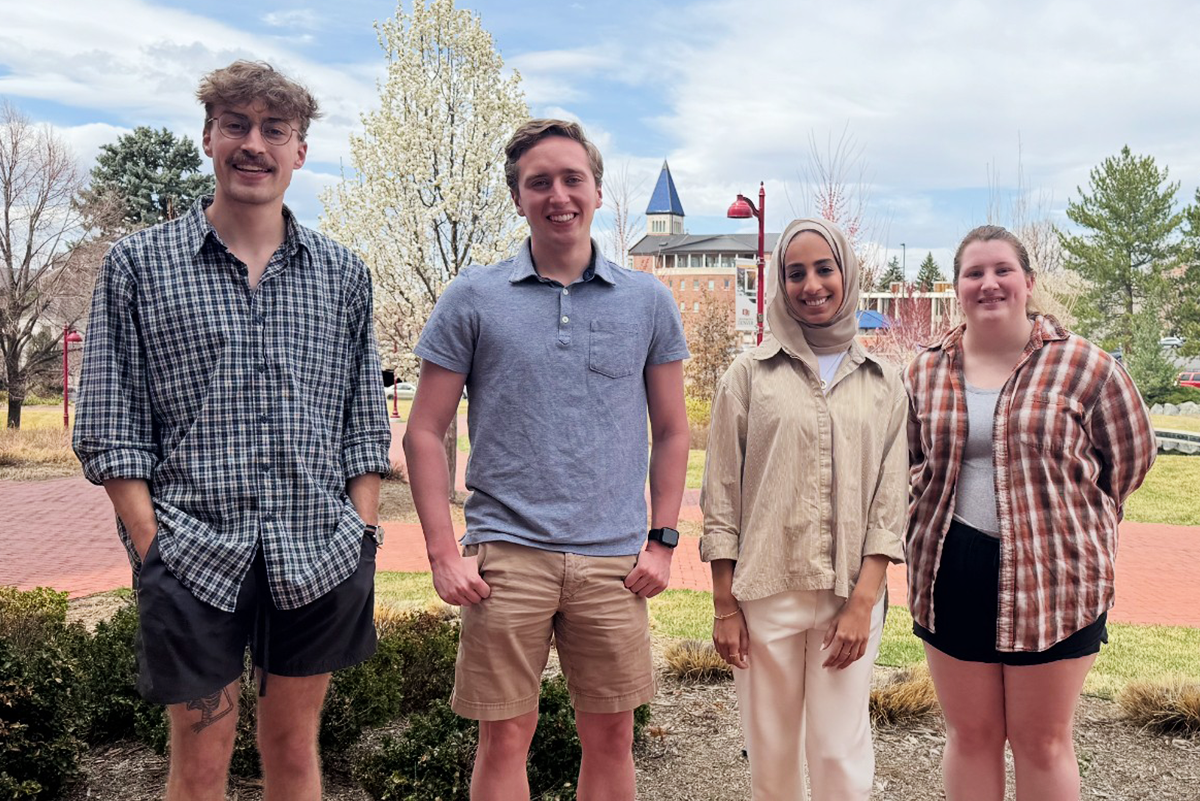
Team Agile
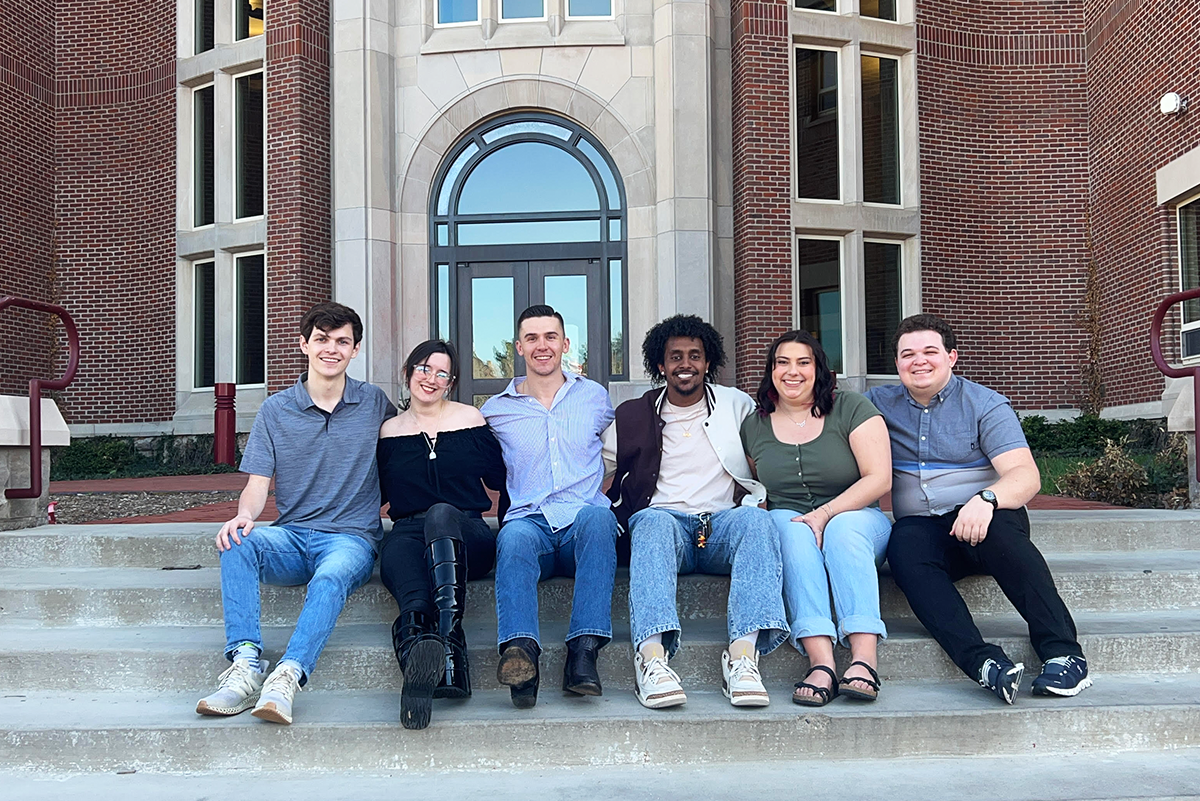
Team B-Braun
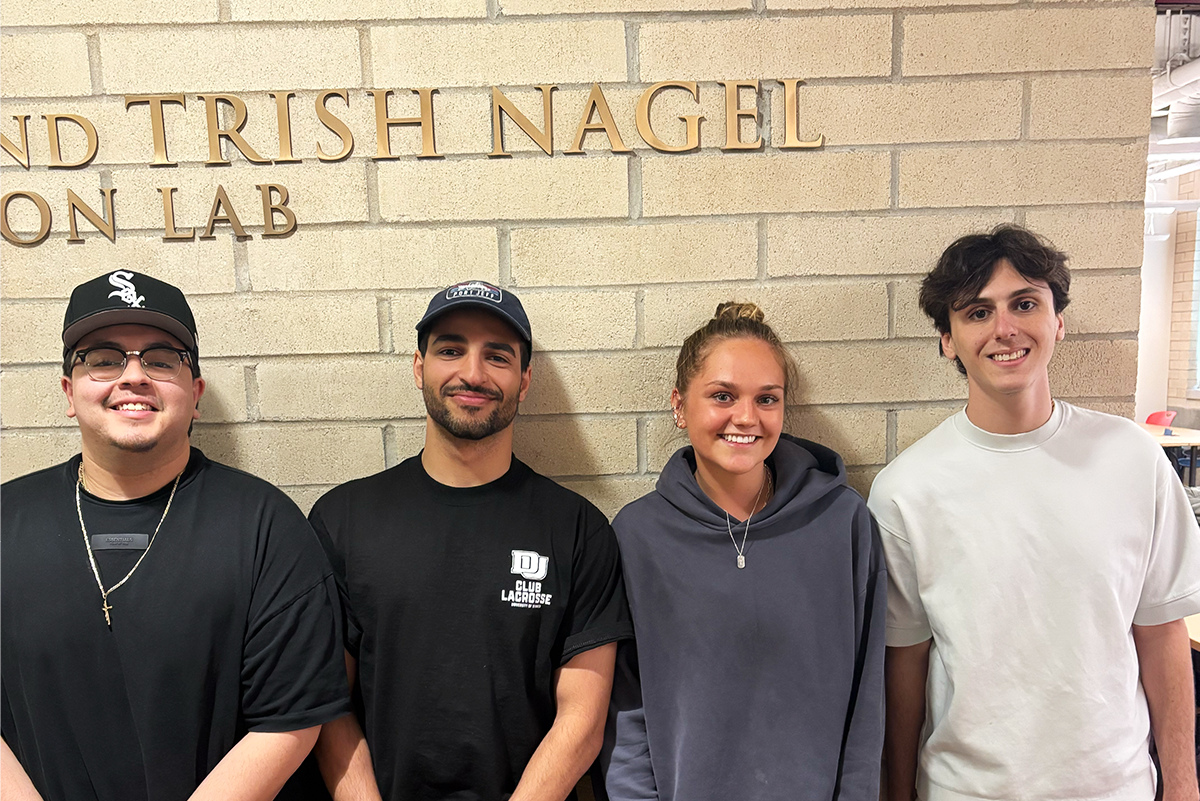
Team BIT
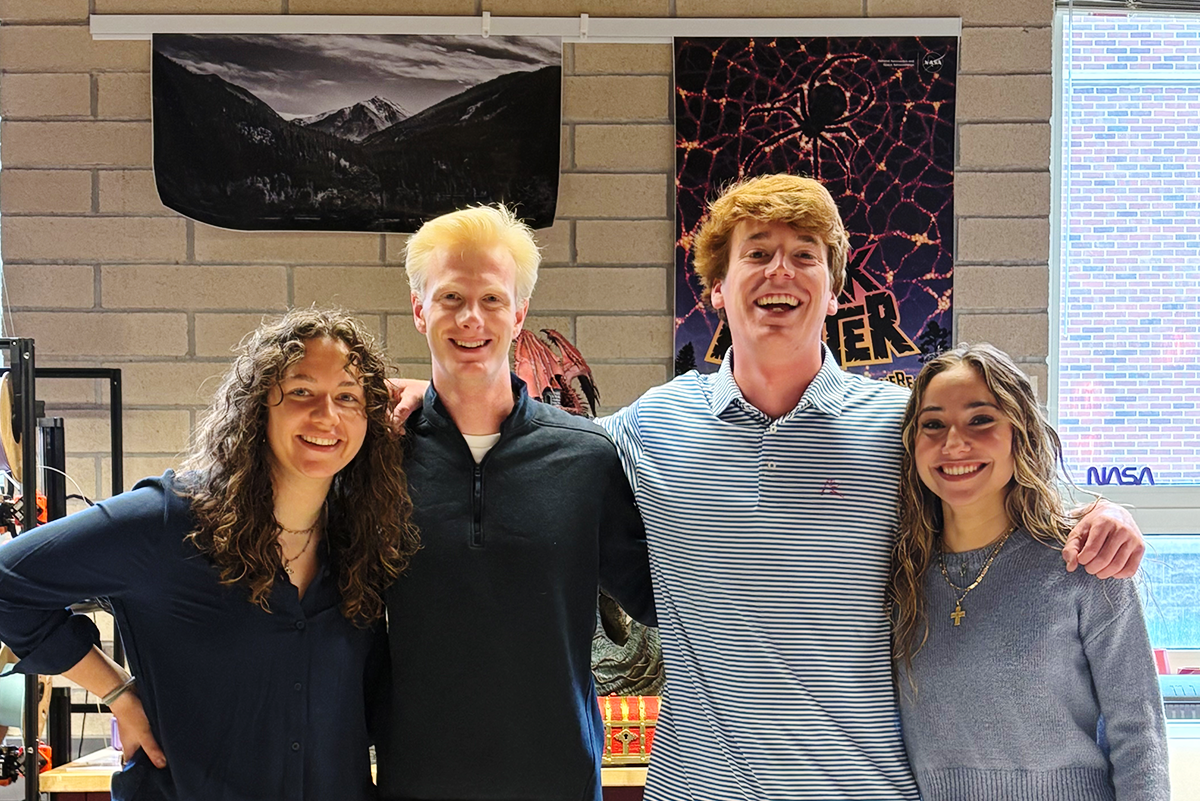
Team Craig
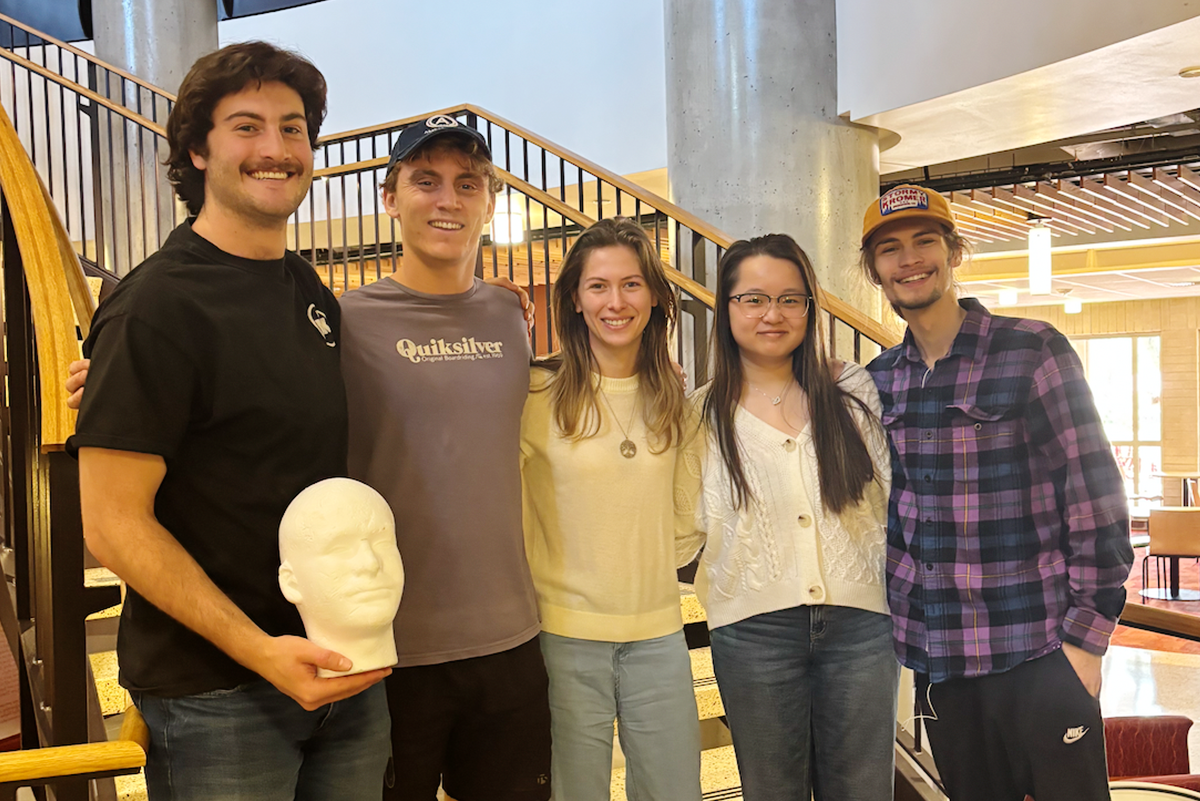
Team Daqscribe
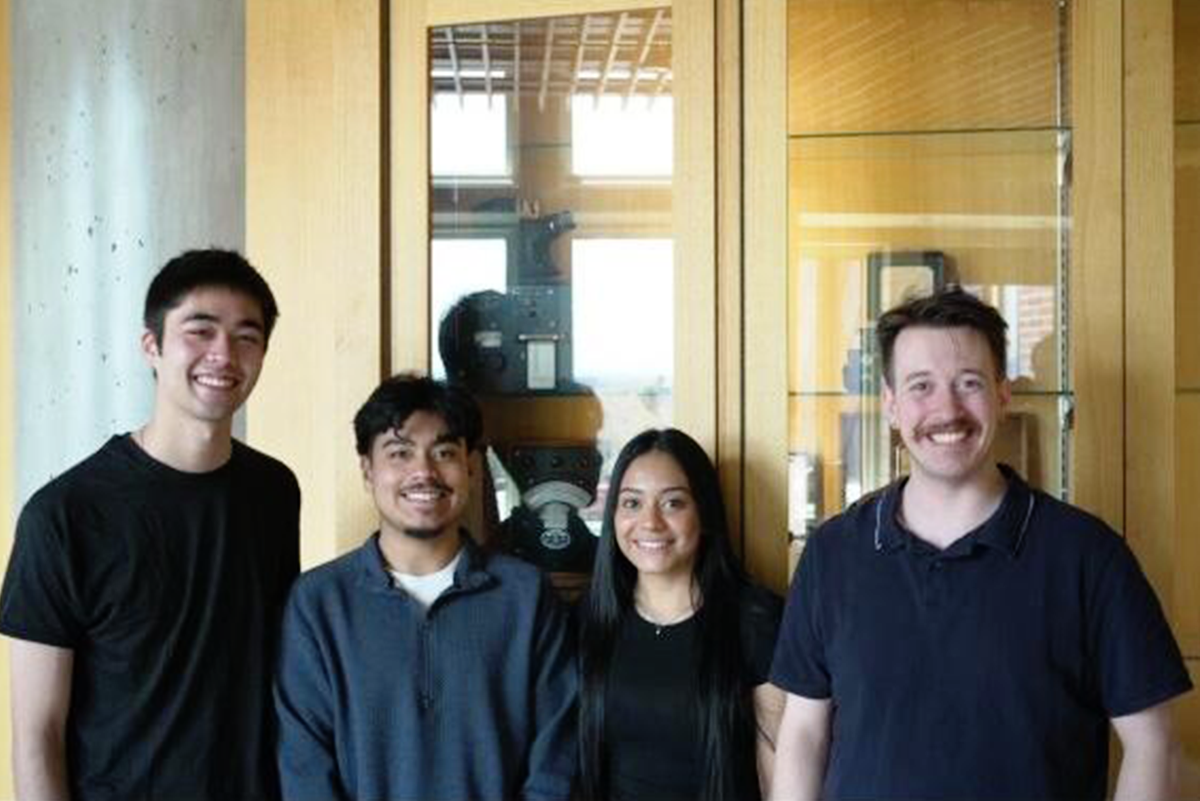
Team DU-Equilibrium
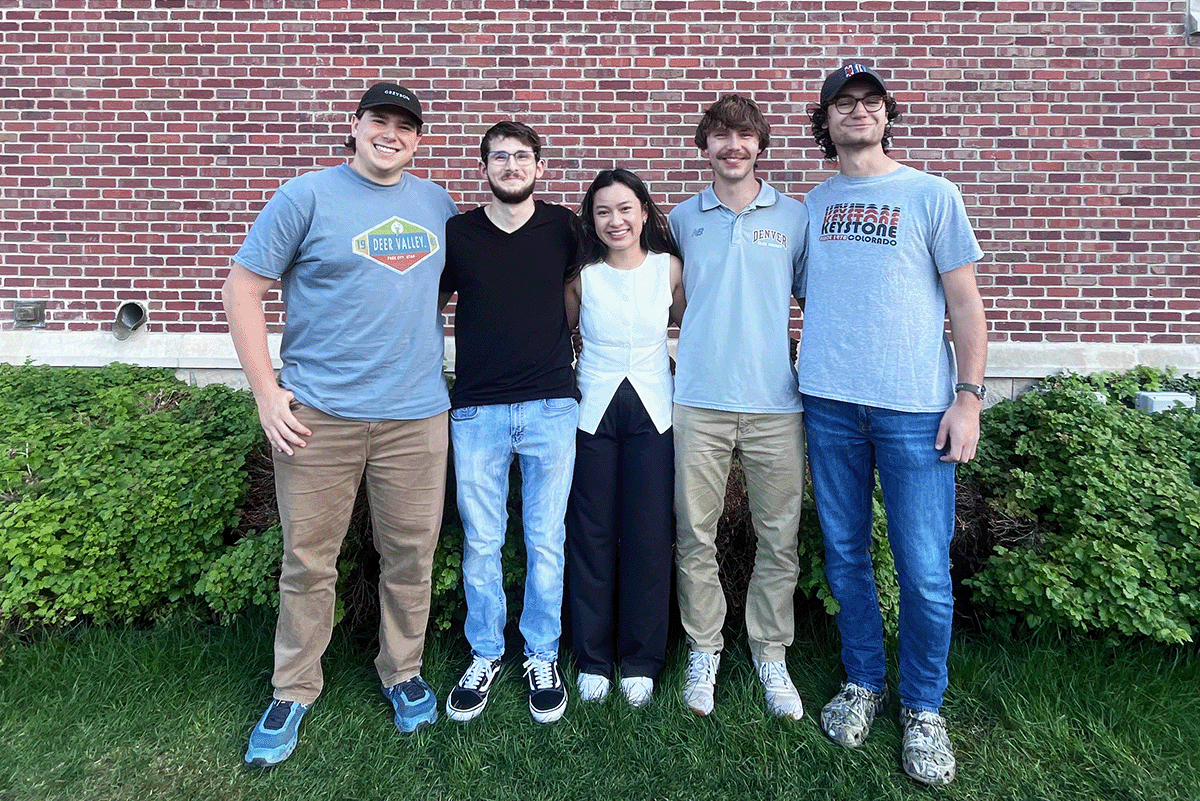
Team Eventum
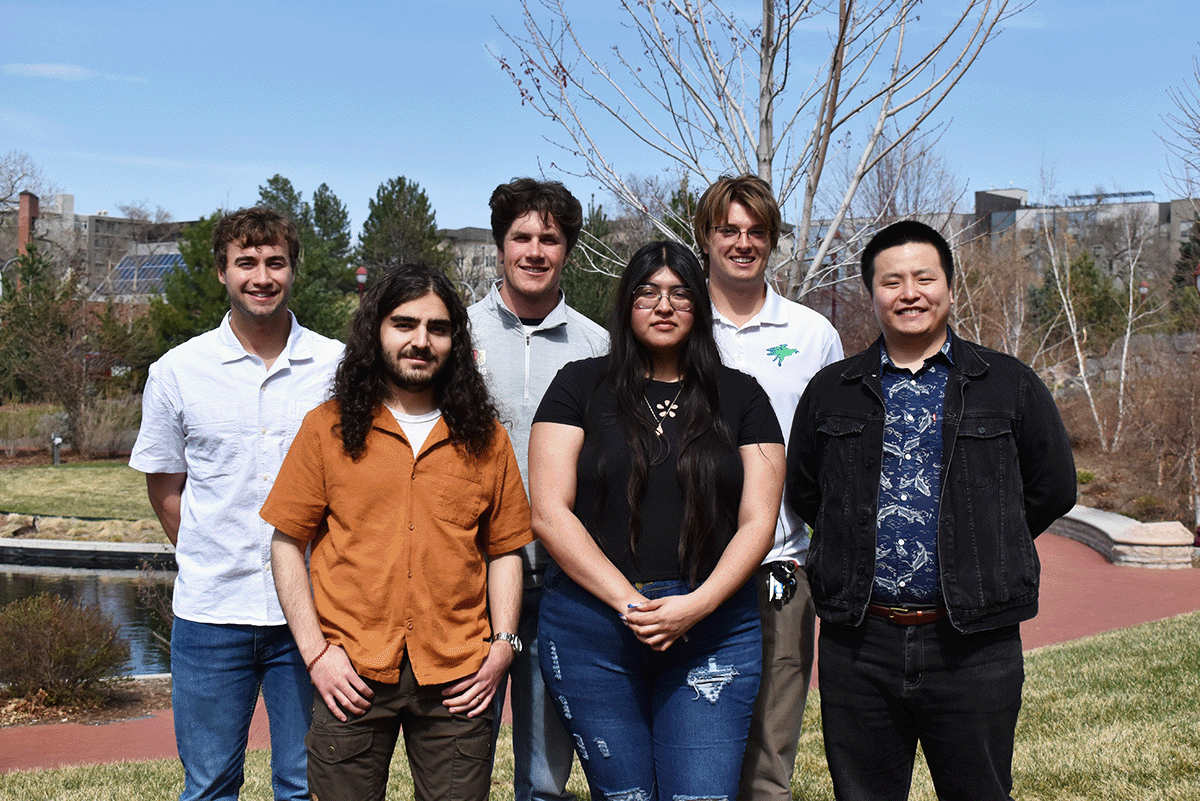
Team Eventum
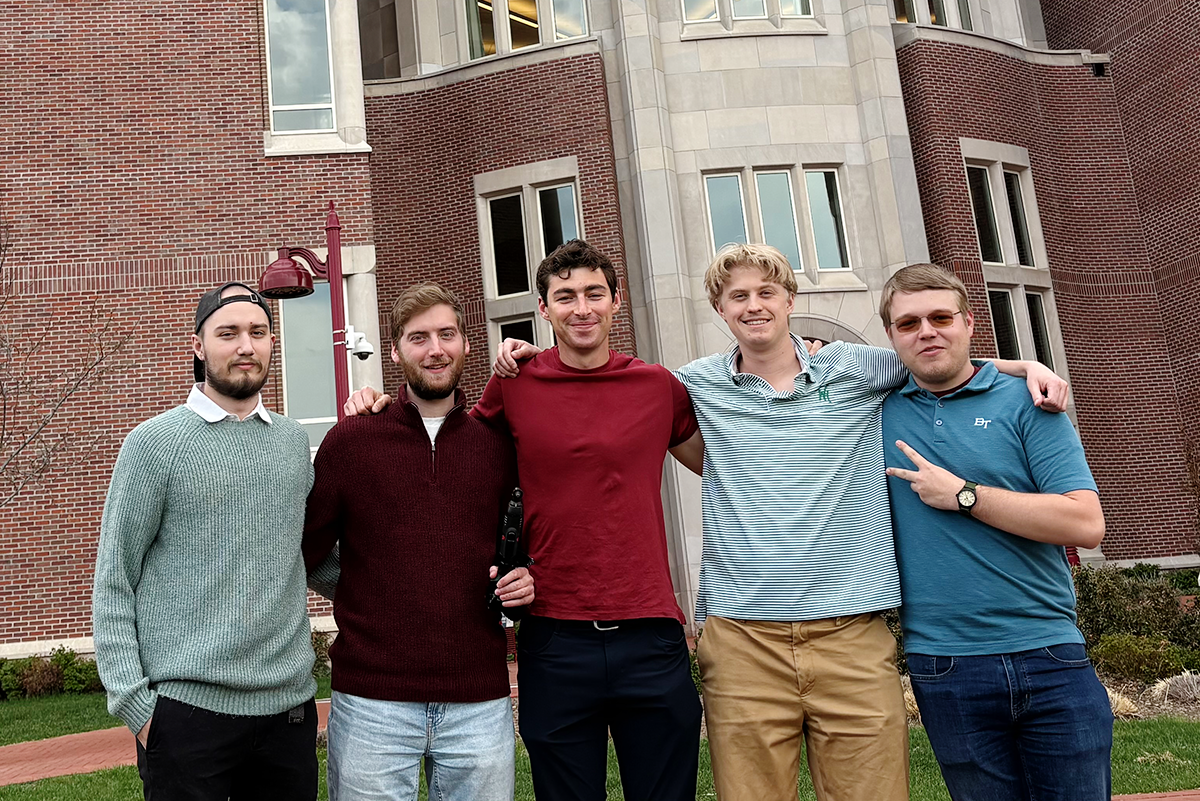
Team Lockheed
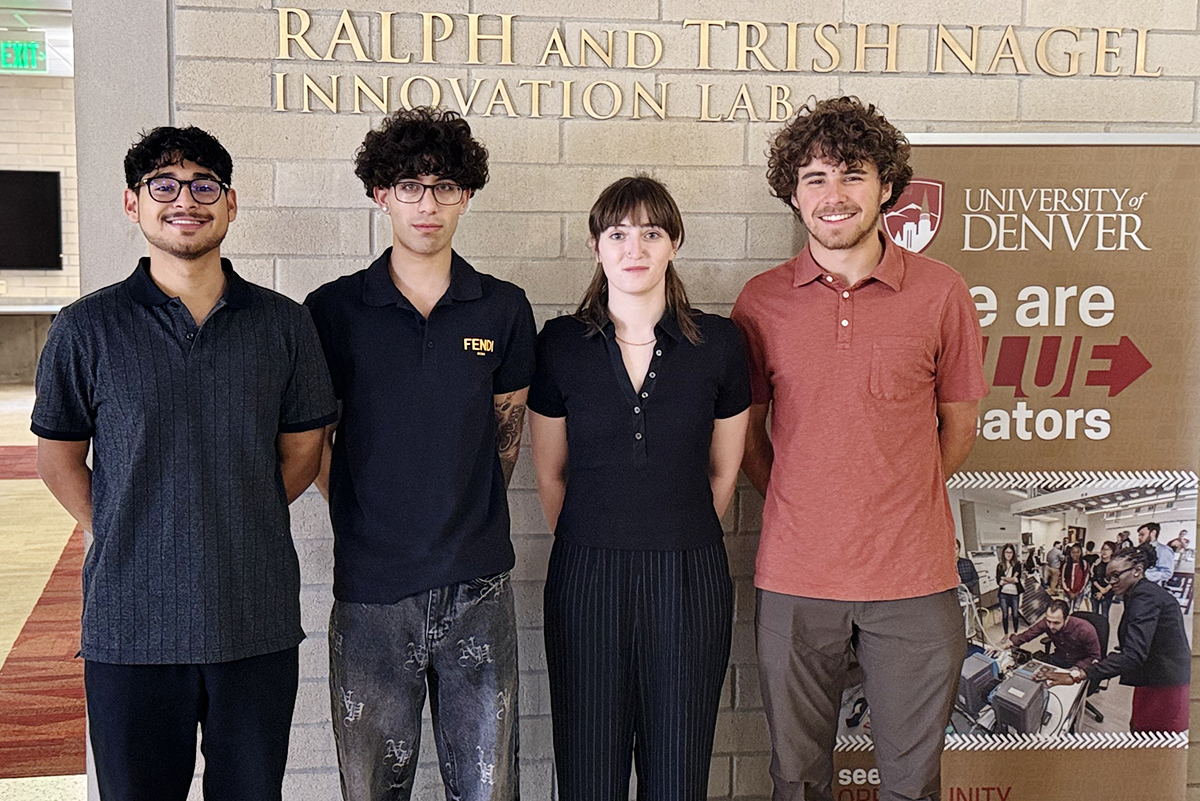
Team Mina
